The MSI Z170A Gaming M7 Review: The Step Up to Skylake
by Ian Cutress on September 21, 2015 12:30 PM EST- Posted in
- Motherboards
- Gaming
- MSI
- Skylake
- Z170
Gaming Performance 2015
Our 2015 gaming results are still relatively new, but the issue of FCLK settings might play a big role here. At launch, the default setting for the communication buffer between the CPU and PCIe stack was 800 MHz, even though Intel suggested 1000 MHz, but this was because of firmware limiations from Intel. Since then, there is firmware to enable 1000 MHz, and most motherboard manufacturers have this - but it is unclear if the motherboard will default to 1000 MHz and it might vary from BIOS version to BIOS version. As we test at default settings, our numbers are only ever snapshots in time, but it leads to some interesting differences in discrete GPU performance.
Alien: Isolation
If first person survival mixed with horror is your sort of thing, then Alien: Isolation, based off of the Alien franchise, should be an interesting title. Developed by The Creative Assembly and released in October 2014, Alien: Isolation has won numerous awards from Game Of The Year to several top 10s/25s and Best Horror titles, ratcheting up over a million sales by February 2015. Alien: Isolation uses a custom built engine which includes dynamic sound effects and should be fully multi-core enabled.
For low end graphics, we test at 720p with Ultra settings, whereas for mid and high range graphics we bump this up to 1080p, taking the average frame rate as our marker with a scripted version of the built-in benchmark.
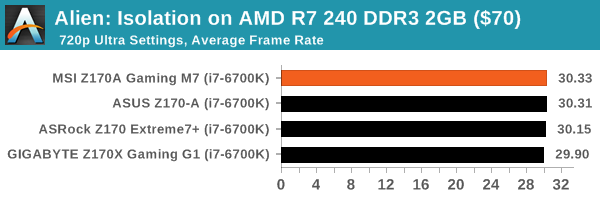
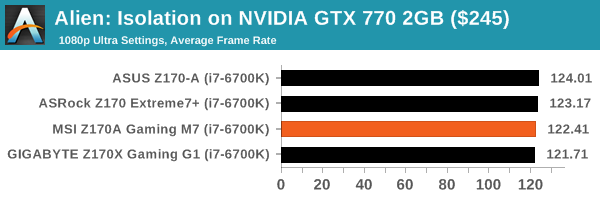
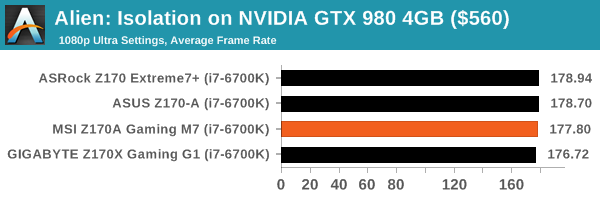
Total War: Attila
The Total War franchise moves on to Attila, another The Creative Assembly development, and is a stand-alone strategy title set in 395AD where the main story line lets the gamer take control of the leader of the Huns in order to conquer parts of the world. Graphically the game can render hundreds/thousands of units on screen at once, all with their individual actions and can put some of the big cards to task.
For low end graphics, we test at 720p with performance settings, recording the average frame rate. With mid and high range graphics, we test at 1080p with the quality setting. In both circumstances, unlimited video memory is enabled and the in-game scripted benchmark is used.
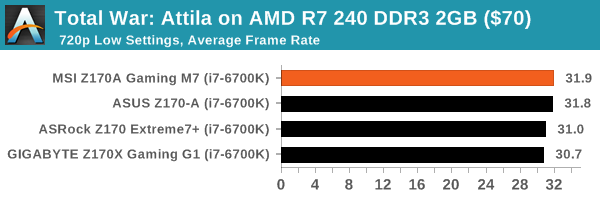
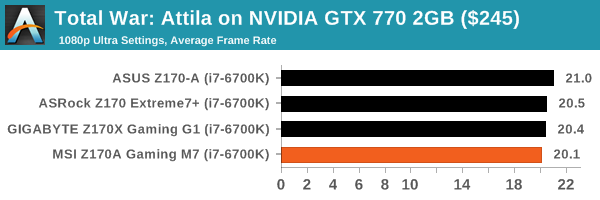
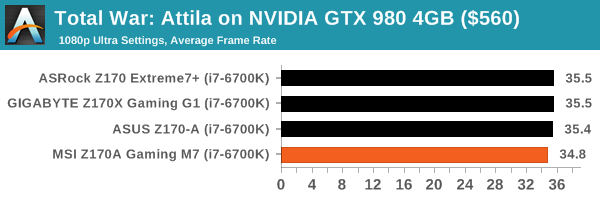
Grand Theft Auto V
The highly anticipated iteration of the Grand Theft Auto franchise finally hit the shelves on April 14th 2015, with both AMD and NVIDIA in tow to help optimize the title. GTA doesn’t provide graphical presets, but opens up the options to users and extends the boundaries by pushing even the hardest systems to the limit using Rockstar’s Advanced Game Engine. Whether the user is flying high in the mountains with long draw distances or dealing with assorted trash in the city, when cranked up to maximum it creates stunning visuals but hard work for both the CPU and the GPU.
For our test we have scripted a version of the in-game benchmark, relying only on the final part which combines a flight scene along with an in-city drive-by followed by a tanker explosion. For low end systems we test at 720p on the lowest settings, whereas mid and high end graphics play at 1080p with very high settings across the board.
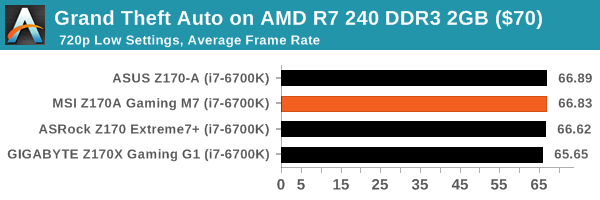
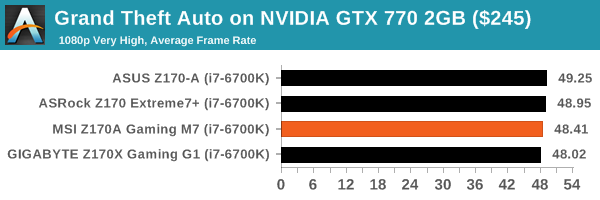
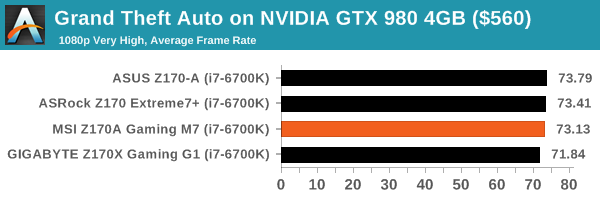
GRID: Autosport
No graphics tests are complete without some input from Codemasters and the EGO engine, which means for this round of testing we point towards GRID: Autosport, the next iteration in the GRID and racing genre. As with our previous racing testing, each update to the engine aims to add in effects, reflections, detail and realism, with Codemasters making ‘authenticity’ a main focal point for this version.
GRID’s benchmark mode is very flexible, and as a result we created a test race using a shortened version of the Red Bull Ring with twelve cars doing two laps. The car is focus starts last and is quite fast, but usually finishes second or third. For low end graphics we test at 1080p medium settings, whereas mid and high end graphics get the full 1080p maximum.

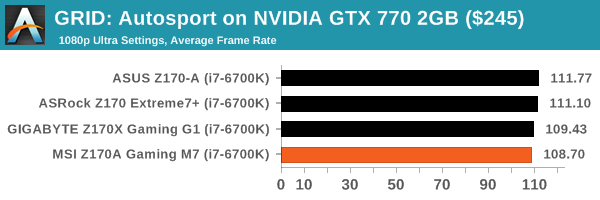
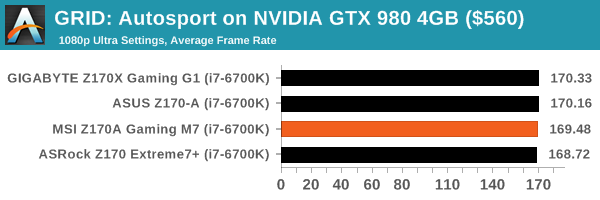
Middle-Earth: Shadow of Mordor
The final title in our testing is another battle of system performance with the open world action-adventure title, Shadow of Mordor. Produced by Monolith using the LithTech Jupiter EX engine and numerous detail add-ons, SoM goes for detail and complexity to a large extent, despite having to be cut down from the original plans. The main story itself was written by the same writer as Red Dead Redemption, and it received Zero Punctuation’s Game of The Year in 2014.
For testing purposes, SoM gives a dynamic screen resolution setting, allowing us to render at high resolutions that are then scaled down to the monitor. As a result, we get several tests using the in-game benchmark. For low end graphics we examine at 720p with low settings, whereas mid and high end graphics get 1080p Ultra. The top graphics test is also redone at 3840x2160, also with Ultra settings, and we also test two cards at 4K where possible.
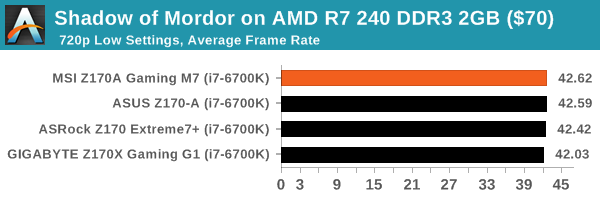
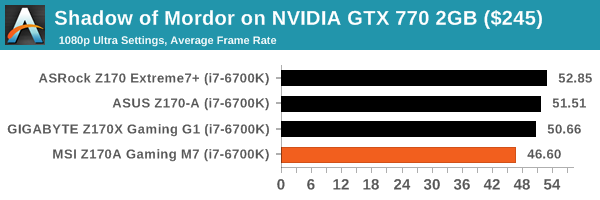
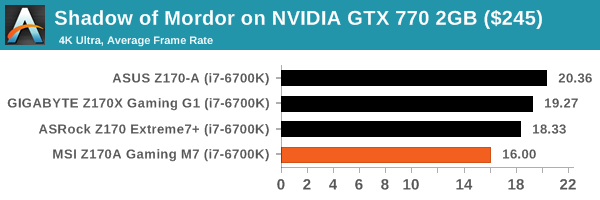
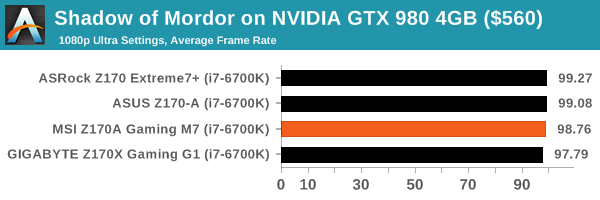
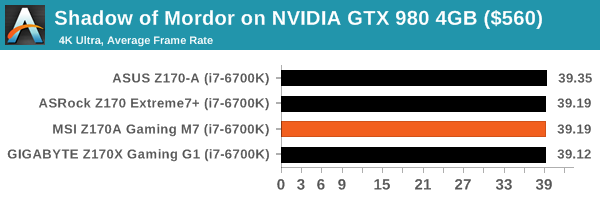



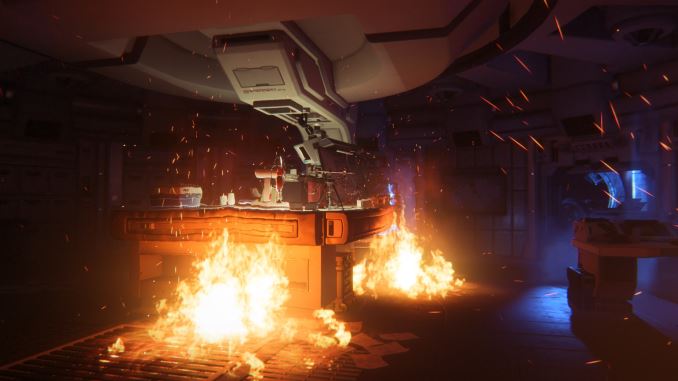
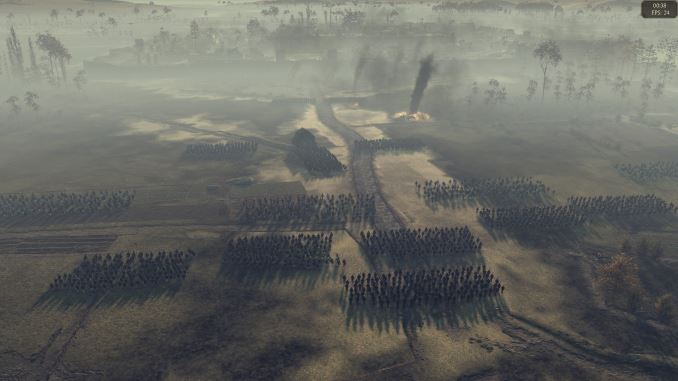
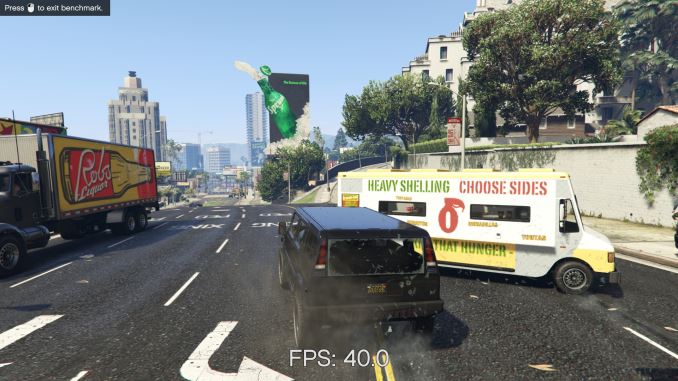
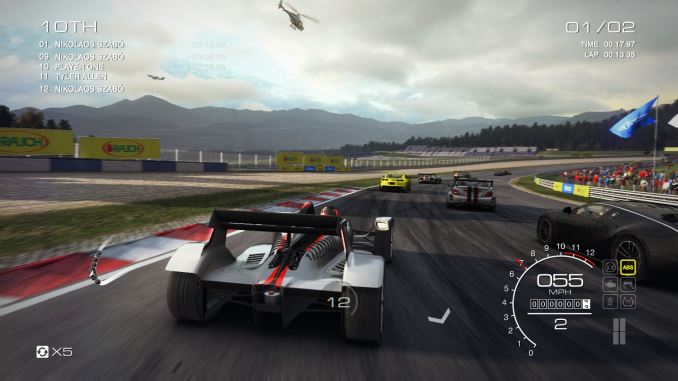
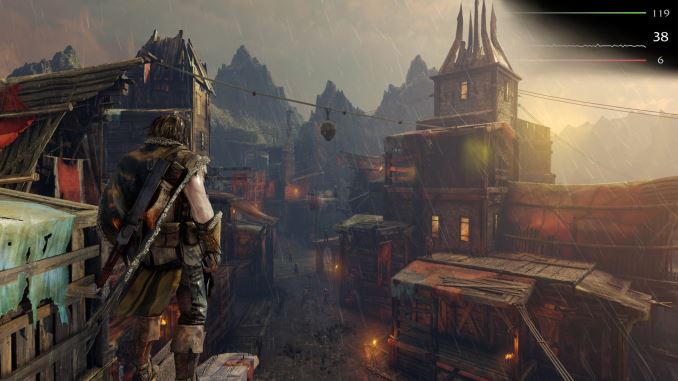








56 Comments
View All Comments
Byrn - Monday, September 21, 2015 - link
Thanks for the review! Any chance of an article looking at using two PCI-E 3.0 x4 M.2 SSDs in raid using Intel RST? SM951s for preference ;)drtechno - Thursday, October 1, 2015 - link
Byrn -- In short, you CAN'T. The MSI boards (all of them) do not support BOTH M.2 slots running in PCI-E x4 mode. If you plug in two M.2 drives, the second slot drops to SATA mode. It says it right there on MSI's web site.I don't know why this review (and many other reviews like it) don't point out that most of the boards with dual M.2 slots do NOT support dual PCI-E x4 mode. The second slot drops to SATA in almost all the boards.
The only board I have come across that supports dual PCI-E x4 modes on M.2 is the Gigabyte boards.
Byrn - Friday, October 2, 2015 - link
drtechno - Huh, thanks for the heads up. Totally missed that on the detailed spec. Only MSI board this doesn't seem to be the case for is the Z170A xpower gaming titanium edition, which doesn't have this excluded on the spec.That said, all the more reason for an article or even a brief piece on the subject? I can't be the only one looking at multiple M.2 slots for PCI-E SSDs (RAID or not) and it would be good to at least have this pointed out...
Looks like I'm buying Gigabyte then (not that MSI was looking good with Nahimic and Killer even before this...)
LoganPowell - Friday, November 27, 2015 - link
Too bad that the MSI z170a gaming M7 is not very popular if you look at consumer based reviews (such as http://www.consumerrunner.com/top-10-best-desktops... which is my favorite).xthetenth - Monday, September 21, 2015 - link
What is it with MSI trying to sell products by paying to attach negatives to their products? First Killer, which is working its way up to debatable and now Nahimic, which is outright bad.Flunk - Monday, September 21, 2015 - link
I'd argue that Killer has worked it's way down from debatable to useless and are trending downward. Before they were bought out Killer's nics were at least interesting with their hardware implementation of features that other brands do in software. Now they're 100% marketing.Nahimic is at least optional.
Impulses - Monday, September 21, 2015 - link
Little to no value + extra potential hassles galore, definitely a downside in my book.DanNeely - Monday, September 21, 2015 - link
The problem is that it takes a few years for stuff like killer going down the toilet to work it's way from we enthusiasts to the sheeple who pick their board based on the logos and pictures on the box.notR1CH - Tuesday, September 22, 2015 - link
They're actually worse than the Realtek or Intel NICs because you're forced to use Killer's awful drivers. Very disappointed to see MSI yet again buying into this gaming marketing dribble from Killer and making another don't-buy board.PPalmgren - Monday, September 21, 2015 - link
Speaking of bad onboard sound, I may be having buyer's remorse at the moment. I went with the Asus Maximus VIII Gene on my build and have been having trouble diagnosing system hangs for about a week since I built it. I think it may be ASUS' onboard sound solution. I tried closing out their Sonic Suite and ROG EQ stuff and it breaks sound in many applications, so I'm starting to worry that I'm SOL